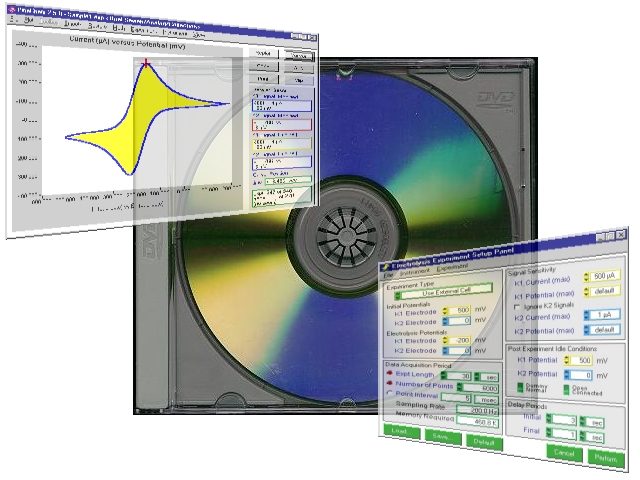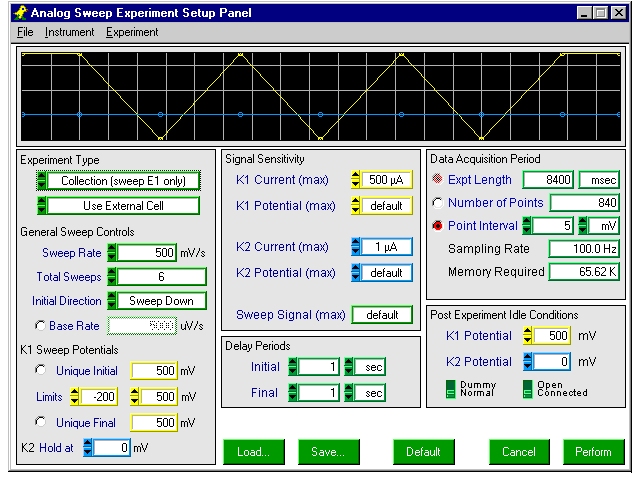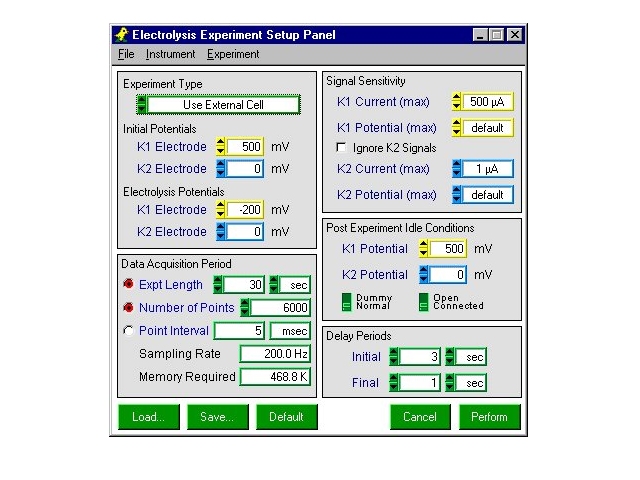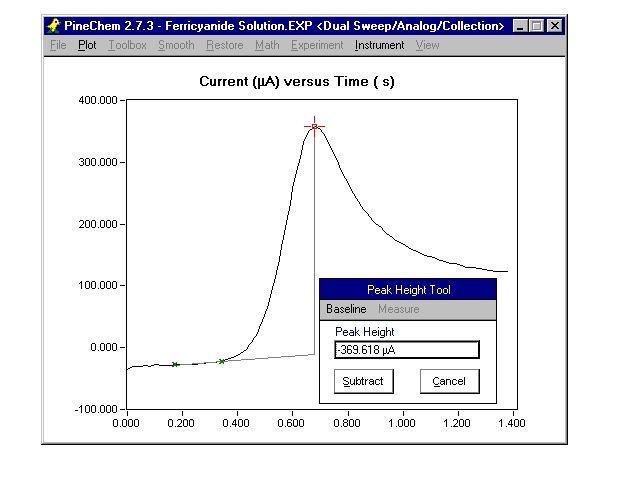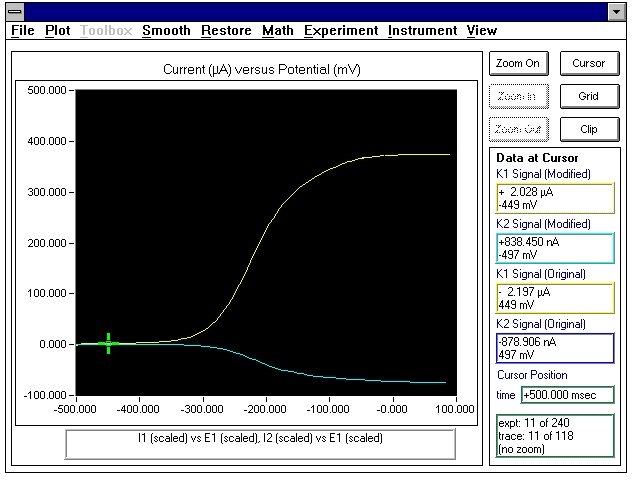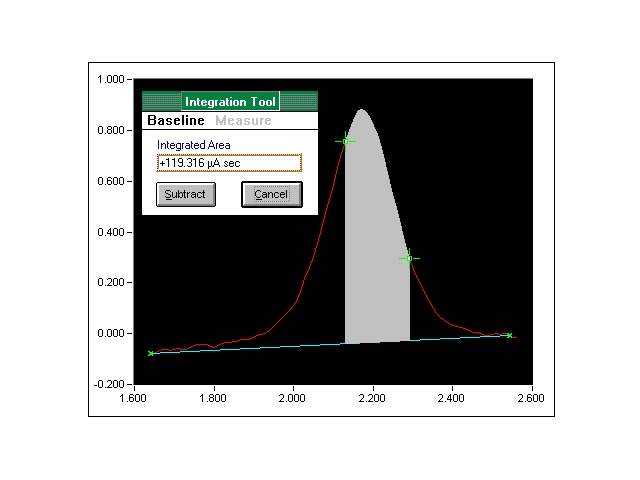Our PineChem voltammetry package works along with your AFCBP1 Bipotentiostat to let you control two working electrodes in the same electrochemical cell. This means that in addition to conventional single working electrode experiments like cyclic voltammetry and rotated disk voltammetry, you can also work with dual electrode configurations like rotated ring-disk electrodes, interdigitized array electrodes, and paired microbands. Together, the AFCBP1 Potentiostat and our PineChem software make a great system that meets all your voltammetry needs at an affordable price. PineChem = Versatile Voltammetry The software consists of a general purpose sweep voltammetry and electrolysis package that provides flexible control over the analog sweep generator, both working electrodes, and the data acquisition process. An intuitive point-and-click graphical user interface lets you control every aspect of your experiment from start to finish (see images). The software even lets you maintain control of your electrochemical cell between experiments. Almost any electrochemical method involving electrolysis or a potential sweep can be performed. Each working electrode can be held at a constant potential or have its potential swept during the experiment. Linear sweep and cyclic voltammetry, and rotating disk voltammetry experiments are all easily accomplished using a single working electrode. Dual electrode techniques, including generator/collector and ring shielding experiments, can be performed with rotated ring-disk electrodes and other twin electrode configurations. All data acquired during an experiment is stored using a compact file format or alternately, you may export your data to other applications for further analysis. You are given complete control over data acquisition parameters, such as sampling interval and electrode sensitivity, and the software helps you set these parameters by suggesting appropriate default values. PineChem = A Smooth Sweep An outstanding feature of our system is that a true analog sweep generator is used to provide the signal for the working electrode potentials during a sweep voltammetry experiment. Rather than substituting a choppy computer-generated digital staircase, our system provides you with the same smooth sweep that electrochemists have been using for years. This allows you to enjoy the benefits of computer control without requiring your voltammetry to "go digital" as well. PineChem = The Right Tools The most important part of an experiment is tinkering with the results. Our software gives you analysis and graphing tools that are specifically tailored for electrochemical data. You can view voltammograms in several different ways by plotting one or both working electrode currents versus either potential or time. You can zoom in on a feature of interest or clip just a portion of the data for further analysis. Several tools allow you to extract quantitative results directly from the on-screen voltammogram. These tools actually mimic the traditional ruler-and-pencil actions of an electrochemist working with a hard copy voltammogram. For example, the peak height tool extrapolates a linear background baseline underneath the voltammetric peak. Then, the peak height is measured against this baseline in the same way that electrochemists have always performed this task. The difference is that the software makes the process easier and does it better. Tools for measuring peak areas and sigmoidal limiting currents are also included. Point your mouse at the menu bar and you can transform your voltammogram using calculus (integration, differentiation, and semi-integration) or a simple algebraic scale-and-offset operation. A variety of data smoothing operations are also available, including simple averaging, Savitsky-Golay and Fourier methods. Our Fourier smoothing routine actually displays your data in the frequency domain so you can filter your data intelligently.

